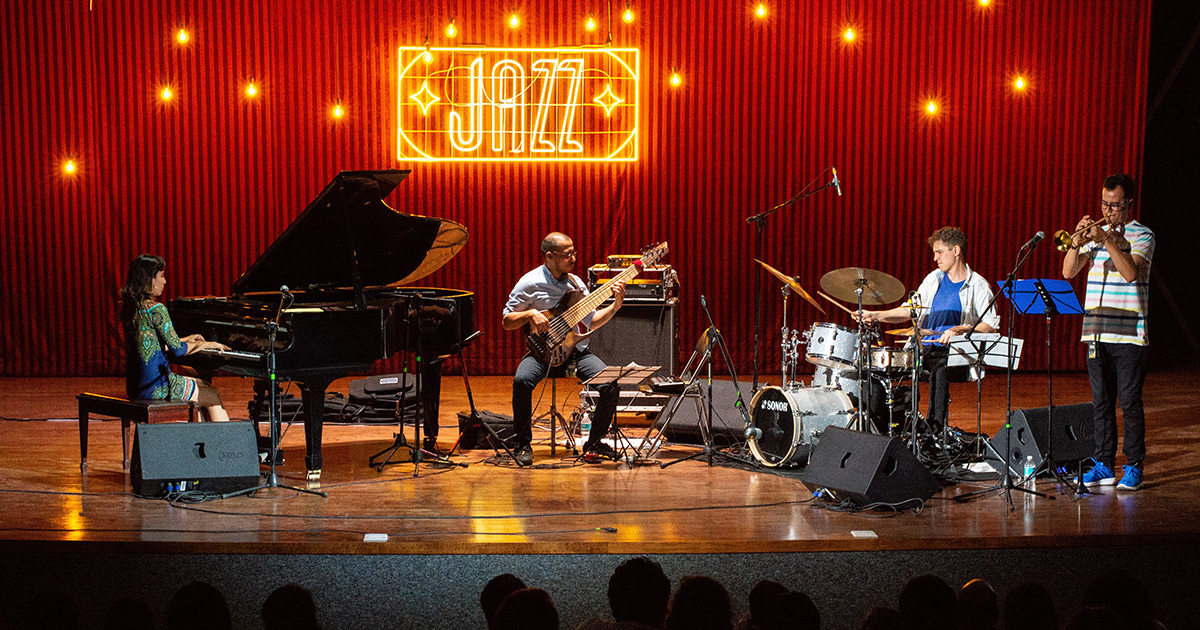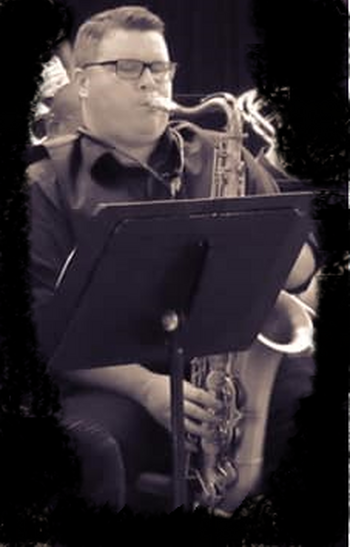Starting a Jazz Band: Where Do I Begin?
by Dr. Alston Pettigrew
Date Posted: August 26, 2019

Jazz historian Marshall Steams penned “The Story of Jazz” in 1956. As part of his book, he included many stories of how the legends got involved with the art form we call Jazz. In his “Story,” Steams quoted an exchange between an elderly woman and Thomas “Fats” Waller (legendary jazz pianist). The elderly woman asked Fats the age-old question, “What is Jazz?” To which Fats replied, “Madam if you do not know by now, don’t mess with it!”
The story above has made its way through jazz circles for over half a century. Later, similar exchanges were said to take place between “outsiders” and Louis Armstrong, Jelly Roll Morton, and other jazz musicians. However, the question remains, what is Jazz? More importantly, how do we, as educators incorporate it into our programs?
In this article, I am not going to attempt to define jazz as anything other than a portion of the music curriculum as a whole. Many texts have been written about the subject of “What is…,” and I can only tell you that for me Jazz is an outlet of music that allows for the purest form of creativity and imagination. While working with my jazz students, I always encourage them to abandon certain conventions and, in the words of Charlie Parker, “Just Play.” However, I will share with you my approach to building a jazz program and discuss the advantages it can bring your program along the way.
Just like starting a new “team” or “club,” starting a jazz band in your program requires interest. Luckily the easiest way to evoke interest in your students is to be your new program’s lead marketing person. In the case of my program, we start Jazz band rehearsals after marching band season (November). I start marketing our jazz program in August by either playing some popular, energetic jazz tunes over the speaker system or playing a few standards on my saxophone while we are in class transitions. Inevitably, this practice “sparks” interest among students who may have not already experienced our program.
"...the easiest way to evoke interest in your students is to be your new program’s lead marketing person." - Dr. Alston Pettigrew
Once the interest is there, the director must next “stoke” the fire by presenting the advantages that come from participation in this type of program. In my program, the jazz bands are our traveling groups. Students in these ensembles regularly “tour” throughout the semester and get to experience things outside of the typical band class. One of the things my groups love to do is visit their elementary schools throughout our recruiting tours. This practice not only allows you to recruit the next group of band kids, but it provides an incentive to be in the jazz program. In addition to touring, our jazz band is the go-to ensemble in our school for virtually any type of assembly or program. By participating in our jazz program, at any level, these students enjoy the opportunity to perform in front of their peers and teachers.
Once you have established the interest of the students, it is important to have a goal in mind for your ensembles. In other words, is your program going to be focused on publicity, festivals, party band, or any other variation? In my group, we have three jazz ensembles that provide different experiences for the students depending on how deeply they want to dive into the art form. My smallest group is our combo. This group typically consists of approximately six members and primarily focuses on what you would call jazz standards. This group is audition only and is regularly called to perform throughout our state. As far as interest level goes, this group consists of my “live and breathe” for jazz students. These students are required to be in our festival group, the next ensemble, but play through higher-level charts in the combo setting. Our festival group is built around the one-on-a-part method. Like the combo, this group is audition only but is more focused on teaching the various styles found in jazz music. This group is what we take to festivals and performances, so the students can learn areas to improve through adjudication. Our last group, what we call our “party band,” consists of any student who wants to be in our jazz program regardless of skill or instrumentation. This band is what I would call a lab group since it is designed to allow students to experience Jazz in a controlled setting. Typically, this group plays more Funk, R&B, Latin and Rock with a few standards mixed in. In each case, I try to provide a tailored experience for the students, so they can get as much, or as little, exposure to jazz as requested.
One area of starting a jazz program that is often overlooked is the rhythm section. In most cases, you should have a few percussionists who are comfortable on drum set, and, if you are lucky, piano. It is important to make sure that these students understand that the approach to a jazz rhythm section is completely different from a “garage band.” In other words, make sure these students understand that they will be expected to listen and learn through lectures and exposure to different techniques and style. The next two parts of the puzzle can seem tricky but are doable if you look in the right places. My cooperating teacher during student teaching used to say if you needed a guitar player go down to ISS and find the school “rock star.” Provide this student with the opportunity to play with a group and, most of the time, they will surprise you with how easily they soak up the requirements of being a jazz guitarist. The last piece of the typical rhythm section is your bassist. In many cases, I have had success in recruiting bass players from the orchestra classes. I have also had a few guitar players come up to me and ask if they can play bass in the group. Due to these students’ experience with a six-string, they tend to do just fine for our program on bass. While these are not the only places you can find these “non-typical” band instruments, I encourage you to use these as a start.
The last thing I encourage you to do when building a Jazz program is to provide the students with as many performance opportunities as possible. While I know many of us spend all fall juggling rehearsals, games, competitions, parades, and concerts, providing the opportunity to perform is vital to the longevity of your program. In our area of the state, I know of a director that just started a middle school jazz program. He has done a great job of providing countless performance opportunities for his students. As a result of his efforts, the student’s desire to improve in the art of jazz and the interest to be involved in his program have both increased. If you are looking for performance opportunities, call around to local businesses, town hall, nursing homes, or any other type of public location. Many times, their proprietors would like to have some live music. This will not only provide good PR for your total program, but it will also allow your students to display their talents to their friends and family.
"...anything in life that is worth doing is worth doing well" - Dr. Alston Pettigrew
Developing a jazz program can seem like a daunting task, but the benefits it will provide your students are boundless. Like I tell my students daily, anything in life that is worth doing is worth doing well. If I could ever be of any help to you in your pursuit to develop a jazz program, please do not hesitate to ask. While I do not claim to know everything, I will do my best to help you find an answer!

Dr. Alston Pettigrew is currently serving as Director of Bands at Westside High School in Anderson, SC. While at Westside, he has grown the Jazz Program to support three different groups: Festival, Community, and Combo. Previously, Alston worked at Palmetto High School in Williamston, SC. He graduated from Anderson University (SC) with a Degree in Music Education, Arkansas State University with a Master of Science Degree in Educational Leadership, and received his Doctoral Degree from Liberty University in Educational Leadership.
Subscribe to the We Are Vandoren E-newsletter (WAVE) to receive 4 weekly articles for Performers, Students, and Educators